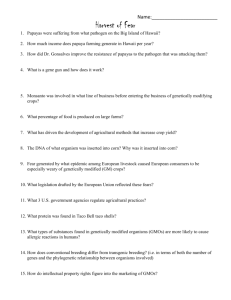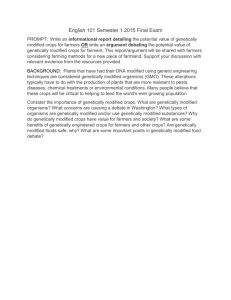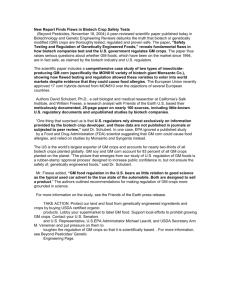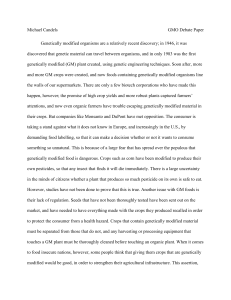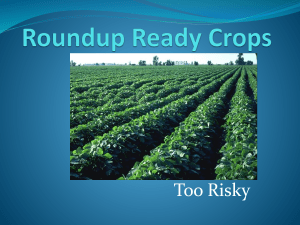Case 1 - la068.k12.sd.us
advertisement
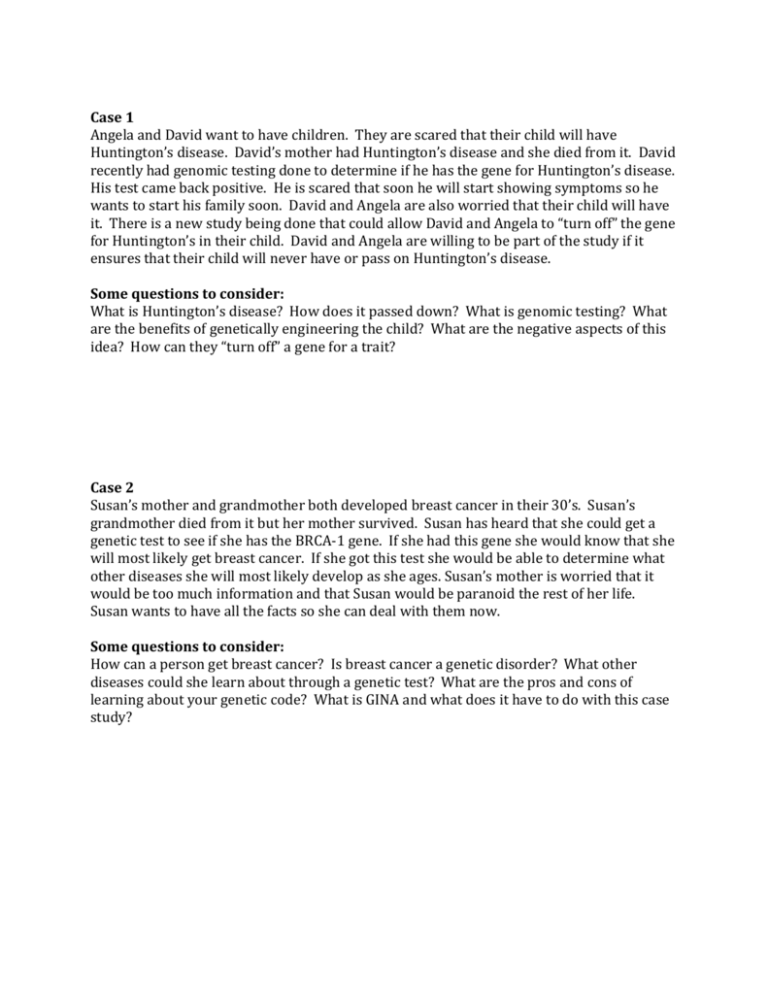
Case 1 Angela and David want to have children. They are scared that their child will have Huntington’s disease. David’s mother had Huntington’s disease and she died from it. David recently had genomic testing done to determine if he has the gene for Huntington’s disease. His test came back positive. He is scared that soon he will start showing symptoms so he wants to start his family soon. David and Angela are also worried that their child will have it. There is a new study being done that could allow David and Angela to “turn off” the gene for Huntington’s in their child. David and Angela are willing to be part of the study if it ensures that their child will never have or pass on Huntington’s disease. Some questions to consider: What is Huntington’s disease? How does it passed down? What is genomic testing? What are the benefits of genetically engineering the child? What are the negative aspects of this idea? How can they “turn off” a gene for a trait? Case 2 Susan’s mother and grandmother both developed breast cancer in their 30’s. Susan’s grandmother died from it but her mother survived. Susan has heard that she could get a genetic test to see if she has the BRCA-1 gene. If she had this gene she would know that she will most likely get breast cancer. If she got this test she would be able to determine what other diseases she will most likely develop as she ages. Susan’s mother is worried that it would be too much information and that Susan would be paranoid the rest of her life. Susan wants to have all the facts so she can deal with them now. Some questions to consider: How can a person get breast cancer? Is breast cancer a genetic disorder? What other diseases could she learn about through a genetic test? What are the pros and cons of learning about your genetic code? What is GINA and what does it have to do with this case study? Case 3 The process of cloning is old but has just recently been used in many practical ways. One of which is to create the perfect herd of livestock. If a rancher has a few perfect cattle that produce a lot of meat he could have them cloned to produce a herd that are genetically identical. In other uses, pet owners could clone their pets so they never lose their family friend. In the scientific community the idea of cloning a wooly mammoth has been discussed. DNA from a mammoth has been found in tact and a modern day elephant could be used to carry and deliver the mammoth baby. Cloning is hotly debated. As of now, any scientist who talks about cloning humans has been threatened with losing their licenses and funding. How long will it last? Some questions to consider: How does cloning work? What might be some beneficial ways that cloning could be used? What could be the downfalls of cloning? What are some animals that have been cloned successfully and why were they cloned? With overpopulation a severe threat, why would we want to clone? Case 4 Genetically Modified Crops are all around us. They are hard to avoid. Almost all food at the grocery store contains products from crops that have been genetically altered. For example, the corn that grows around us in South Dakota has been genetically changed to be herbicide resistant. This means that farmers can spray their field with many types of weedkillers and their crops won’t be damaged. This is also used for fields of wheat, alphalpha, and soy beans. Some crops can be genetically engineered to be drought-resistant or to contain extra nutrition. Many of the fruits and vegetables are genetically modified to produce new and interesting flavors. Although a lot of these aspects seem harmless, genetically modified crops are widely debated. Some questions to consider: How are crops genetically altered? Give examples of how genetically modified crops are used in foods we eat every day. What are the downfalls and benefits of genetically modified crops. How do genetically modified crops affect other animals? Case 5 When the police come across a crime scene they sweep for fingerprints. They can run those fingerprints through an online database and match it to anyone who has ever given fingerprints. The likelihood that they would find a match is high as long as they found a good fingerprint. That is harder than it sounds. Fingerprints are not reliable evidence, they can be smeared and partial. DNA is a far better piece of evidence. However, if police find DNA at a crime scene they can run it through a database called CODIS. The only people who have their DNA in CODIS is sex-offenders and some people that commit violent felonies. The chance that they will find a match in CODIS is pretty low. Every person who holds a government job, works for the military, or has been booked for a crime gives fingerprints. Should more people be required to put DNA in the CODIS file? Some questions to consider: What is CODIS? Why is more reliable than the fingerprint database? Why is it harder for police to use CODIS than just the fingerprint database? What are the pros and cons of more citizens giving DNA to CODIS? Case 6 Samuel has a 300 acre corn field. He has grown corn the way his family has always grown corn. After harvest he holds some corn kernels back as seeds for the next year. Samuel’s neighbor gets his seeds from Monsanto. Monsanto is a seed bio-engineering company. Monsanto produces seeds for crops that are genetically altered in some way. The only catch is that their seeds are sterile producing. This means that the corn kernels that come off the corncobs in this crop cannot be replanted, they are sterile. Monsanto has a patent on their seeds. Samuel is concerned because his corn crop is wind pollinated. If his neighbor’s corn pollen blows into his field, his crops could become sterile. Beyond that, if Monsanto found out that his corn crop was bred from a Monsanto crop, they could sue him. Some questions to consider: What does Monsanto do? How do corn crops pollinate? What makes Monsanto seed different from normal seed? What are the pros and cons of using genetically modified seed? What could be the economic implications of using genetically modified seed?
